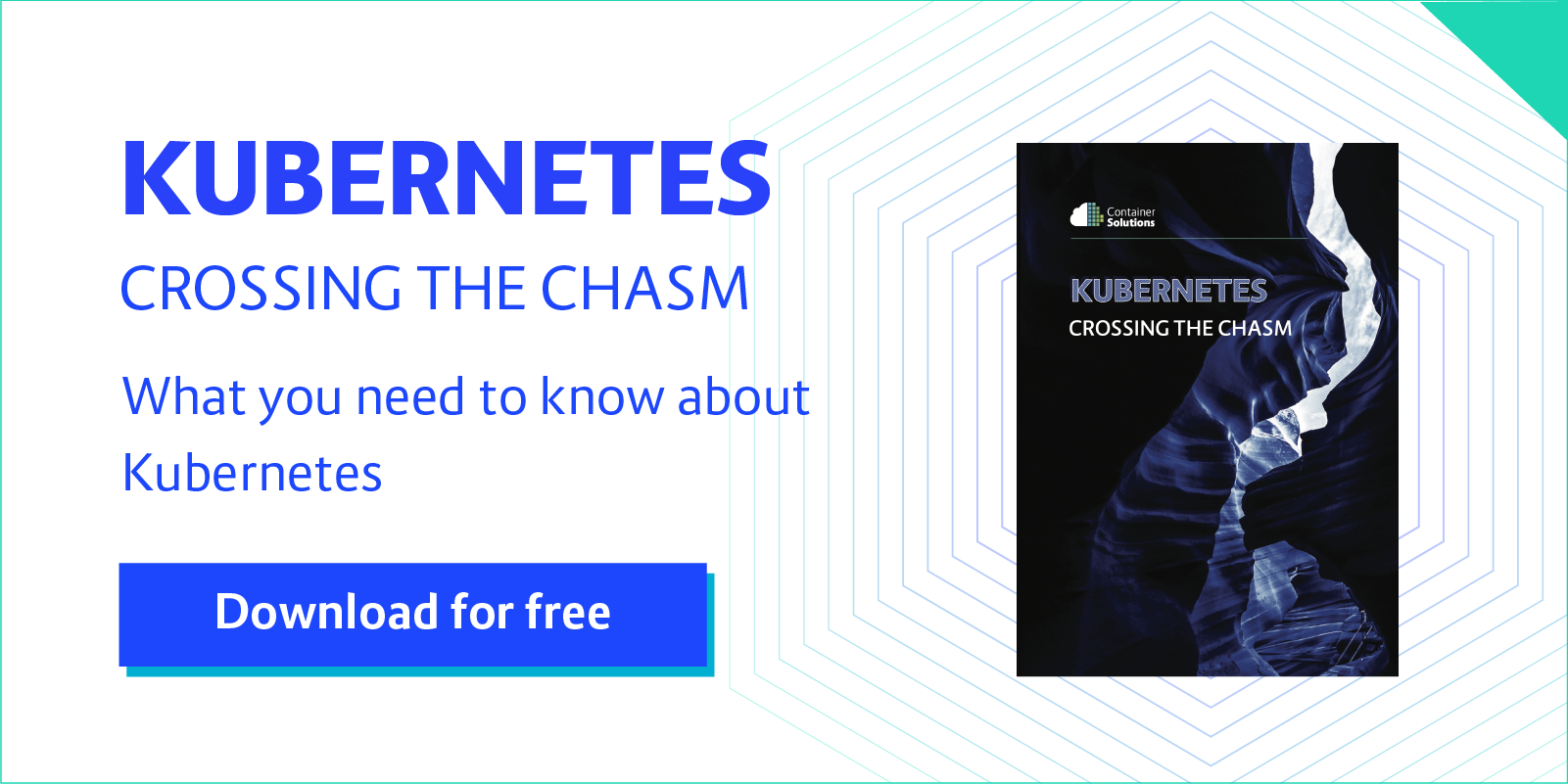Time for the Kubernetes edition of our look back at the best Container Solutions blog posts of 2018!
CS is a Kubernetes Certified Service Provider, and in May 2018 we also became certified Kubernetes Training Partners. This status was given to just six providers recognized for deep experience creating and delivering Cloud Native training. Education and training are a key component of the CS approach to guiding companies onto the cloud. We don’t just help you migrate -- along the way, we also teach the skills and knowledge necessary to function independently and successfully so you can live there happily ever after.
Check out our Kubernetes training program, a two day hands-on workshop covering the platform’s fundamental concepts and features. Participants learn everything you need to reason about and architect Cloud Native applications on Kubernetes, and then apply those skills to deploy a demo application. (Please note that this is a Container Solutions program and not affiliated with the Linux Foundation's Kubernetes training courses).
Since we both teach Kubernetes as well as provide expert service to clients, our K8s blog posts cover a broad spectrum. CS strive to be thought leaders in both the architecture and application of Cloud Native technologies, so we have lots of hands-on blogs from our engineers offering deep insight into best practices and implementation. We also have some higher-altitude looks at how Kubernetes fits into and functions with other CN design components -- including whether or not you should even be using it in the first place. Here are some of our most useful and/or thought-provoking articles from 2018.
When is the WRONG time to use Kubernetes?
Getting started with containers and orchestrators can be deceptively easy. These days you can simply go online, click, and in ten seconds you have a fully-provisioned container running. Many organisations will do just that, experimentally: start with one container, it goes well, and they think how easy it is. So then they add another small app, it also goes well and they get approval from management to move forward with a full-fledged cloud migration -- trusting that Kubernetes will handle everything.
Unfortunately, as the process moves forward the complexity of distributed systems increases exponentially. Monitoring, storage, how different components are behaving together; defining communications, networking security…By the time a company realises there are problems inherent in their migration — serious ones — it’s too late. Often, this “too late” pileup of problems is Kubernetes’ fault. Or, that is, implementing Kubernetes as the right solution, only at the wrong time. Read our CTO Pini Reznik’s step-by-step roadmap for how and, more importantly when, to implement Kubernetes.
Delivering Kubernetes Native Applications with Helm
Properly implemented K8s can make life much easier. However, configuring Kubernetes is complex and difficult. Out of the box “vanilla” Kubernetes applications can have dozens upon dozens of configuration files, with no logic between them. The technology took a major step forward with the introduction of Helm, the Kubernetes package manager. CS engineer Ian Crosby introduces this open source “missing link” for abstracting away the complexities.
Cloud Services for your Kubernetes Applications
The Service Catalog is an extension API that offers powerful abstractions to make services available in a Kubernetes cluster. Container Solutions engineer Riccardo Cefala offers an introduction to this collection of services. While these are typically third-party managed cloud offerings, there is nothing preventing us from using them as self-hosted services. On the one hand, this allows Kubernetes operators to integrate third party services and offer fine tuned services hosted on the cluster itself. On the other hand, developers can focus on the applications without the need for managing complex services deployment.
A Gentle Introduction to Validation Admission Webhooks in Kubernetes
In January 2018, the Kubernetes v1.9.0 release included a webhook admission controller. CS Cloud Native engineer Aleksandr Guljajev gives a thorough overview on how to create, test and deploy your webhook validation admission controller in Kubernetes.



 Previous article
Previous article
